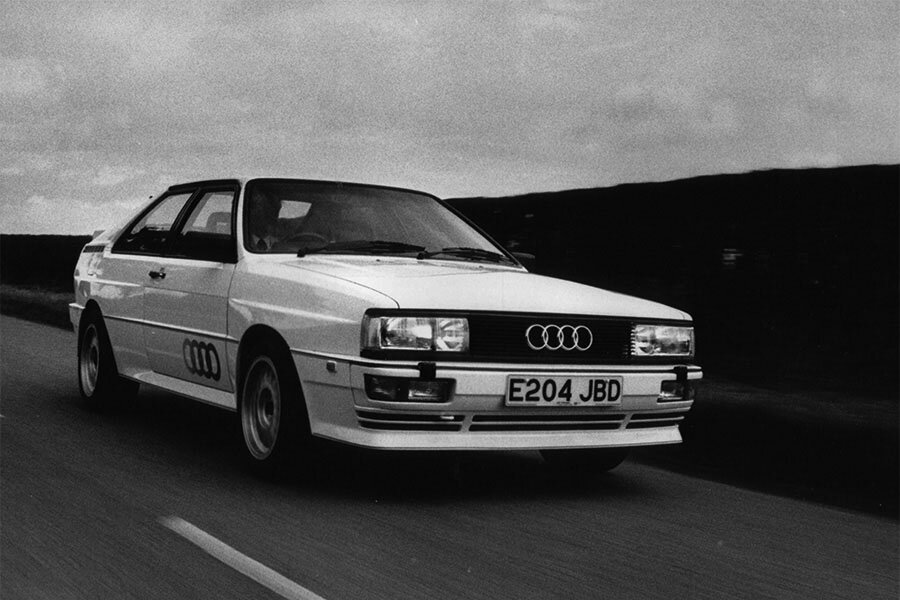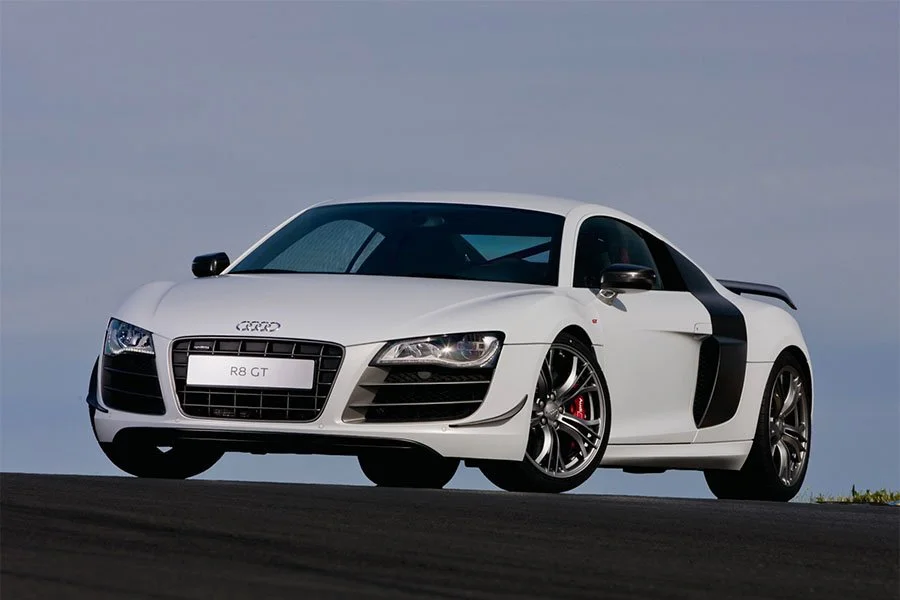Guide: Audi Quattro MB - a Historical & Technical Appraisal
/BACKGROUND
In the years that followed its 1980 Geneva Motor Show launch, the Audi Quattro became an icon of its era.
Thanks to a state-of-the-art four-wheel drive system, the Quattro’s roadholding was a revelation. Coupled with a powerful turbocharged five cylinder engine and practical but handsome packaging, it was in a class of its own.
In roadholding terms, the Quattro redefined what was possible from an executive-sized machine.
Nowhere was this better reflected than the world of rallying where, prior to the arrival of tricked-out Group B specials, the Quattro was the car to have.
Beforehand, most manufacturers thought four-wheel drive too complex to be successful in rallying.
That soon changed.
In 1983 and 1984 the world champion driver used a Quattro while Audi also took the manufacturer titles in 1982 and 1984. The intervening 1983 manufacturers’ title fell to Lancia whose Group B 037 was the last rear-wheel drive car to secure the world championship.
Despite its high price, the Quattro proved considerably more popular than anticipated; Audi hadn’t even planned to offer the model in right-hand drive trim. However, in its first seven years of production, over 8000 Quattros were sold and the UK became Audi’s best export market.
Technical, cosmetic and quality improvements were made year on year; by 1988 the Quattro had already been facelifted inside and out. Thanks to the car’s good looks, supercar-rivalling performance and lack of four-wheel drive competition, it was still very highly sought after.
For the 1988 model year (production of which started in August 1987), Audi introduced the most significant changes yet.
The revamped car was cosmetically little altered but, at its heart, the new Quattro MB had an engine that was 93cc bigger than before. It was also fitted with hydraulic instead of solid lifters.
The transmission and braking system were also overhauled as part of the 1988 model year programme.
ENGINE / TRANSMISSION
The MB engine was another turbocharged inline five-cylinder unit with a cast iron block and an aluminium alloy single overhead camshaft two valve head.
Compared to the original Quattro UR engine, it was bored from 79.5mm to 81mm.
With stroke left at 86.4mm, displacement rose from 2144cc to 2226cc.
Compression was increased from the original 7:1 to 8.6:1 and a new KKK K24 turbo replaced the original K26 item.
Turbo boost was reduced from 0.68 bar to 0.56 bar and there was new electronic wastegate control.
Whereas UR Quattros only had electronic ignition timing control, the MB’s ECU managed timing, boost and fuel. A single knock sensor was added to provide timing feedback.
Although the MB Quattro’s official power output of 200bhp at 5500rpm was unchanged, the new car offered peak torque lower in the rev range: 270lb-ft at 3000rpm instead of 285lb-ft at 3500rpm.
The Quattro’s five-speed manual transmission was uprated with a Torsen torque-sensing differential. It enabled the rear differential to be locked but doing so disabled the ABS. The differential lock was speed-sensitive and at 20kph automatically disengaged (simultaneously re-engaging the ABS).
CHASSIS
To meet domestic TuV regulations, Audi also had to improve the brakes. Twin piston calipers were fitted as a result and the master cylinder was enlarged. The hydraulic brake system was completely revised.
Brake disc diameter remained 280mm front (ventilated) and 245mm rear (solid).
Audi’s B2 pressed steel unibody platform had a 2524mm wheelbase. Its fully independent suspension was via a Macpherson strut, lower wishbone and coil sprung telescopic damper at each corner. If turned through 180°, the Quattro’s suspension arrangement was virtually interchangeable front to rear.
A permanent four-wheel drive system split power equally between the two axles.
Power steering was standard and a 90-litre fuel tank was installed above the rear axle.
15 x 8-inch light alloy wheels originally came shod with Pirelli P7 tyres.
BODYWORK
Audi stylist Martin Smith’s original design for the Quattro still looked fresh even as the 1980s drew to a close.
Some subtle tweaks earlier in its life had been remarkably successful, most notably the switch to single lens headlights (from August 1982) and smoked tail lights (from August 1984).
The only bodywork change made to MB Quattros was a new fibreglass bootlid. This was embellished with chrome-plated tailgate badges in place of the original vinyl decals. A chrome four-ringed Audi badge was also added.
INTERIOR
Inside, many of the early Quattro’s fixtures and fittings had long since given way to better designed higher quality equipment.
By the time the MB variant was introduced for the 1988 model year, Quattro cockpits were a far cry from the sometimes garish originals.
Aside from full leather upholstery and air-conditioning, everything else was pretty much standard. For the first time, this included a sunroof and heated seats.
Changes introduced for the MB Quattro included a change from green to orange LCD readouts and deletion of the voice command synthesiser (information from which was moved to a digital display on the dash). The boost gauge disappeared and was replaced by a water temperature gauge that also acted as a coolant level warning device. The odometer became fully electronic.
WEIGHT / PERFORMANCE
Weight rose from 1300kg to 1335kg but the car’s 137mph top speed was unaffected.
However, thanks to the electronic wastegate control and improved torque rating, the MB Quattro was appreciably quicker from 0-62mph. This now took 6.7 seconds compared to 7.1 for the outgoing variant.
NORTH AMERICAN VERSION
For markets like North America where the Quattro was not approved for sale in standard form, Audi built 200 special edition cars with analogue instrumentation and the WX engine.
The WX engine featured ECU changes, lowered turbo boost, a different camshaft, a catalytic converter and Lambda sensors. It produced around 160bhp.
Aside from the instrumentation and WX engine, everything else on these cars was to MB specification.
END OF PRODUCTION
Production of the MB Quattro continued from August 1987 until July 1989 at which point it was replaced by the RR variant with its new dual overhead camshaft 20 valve engine.
Text copyright: Supercar Nostalgia
Photo copyright: Audi - https://www.Audi.com
































